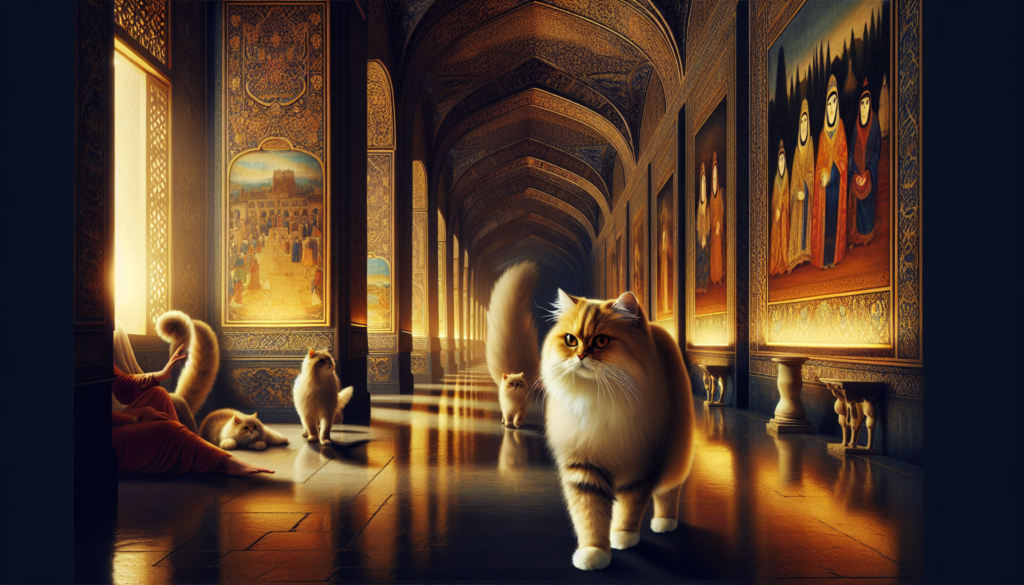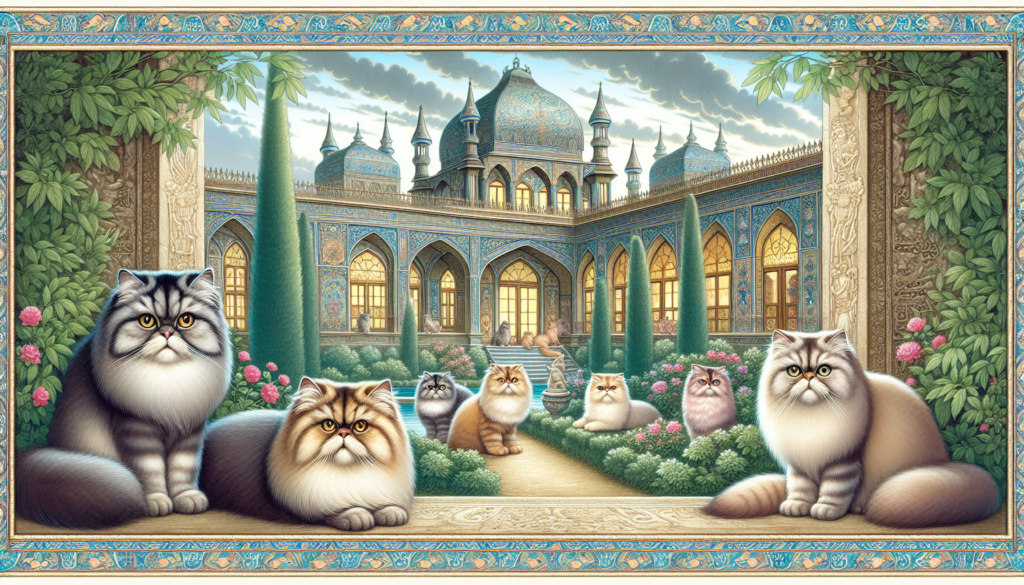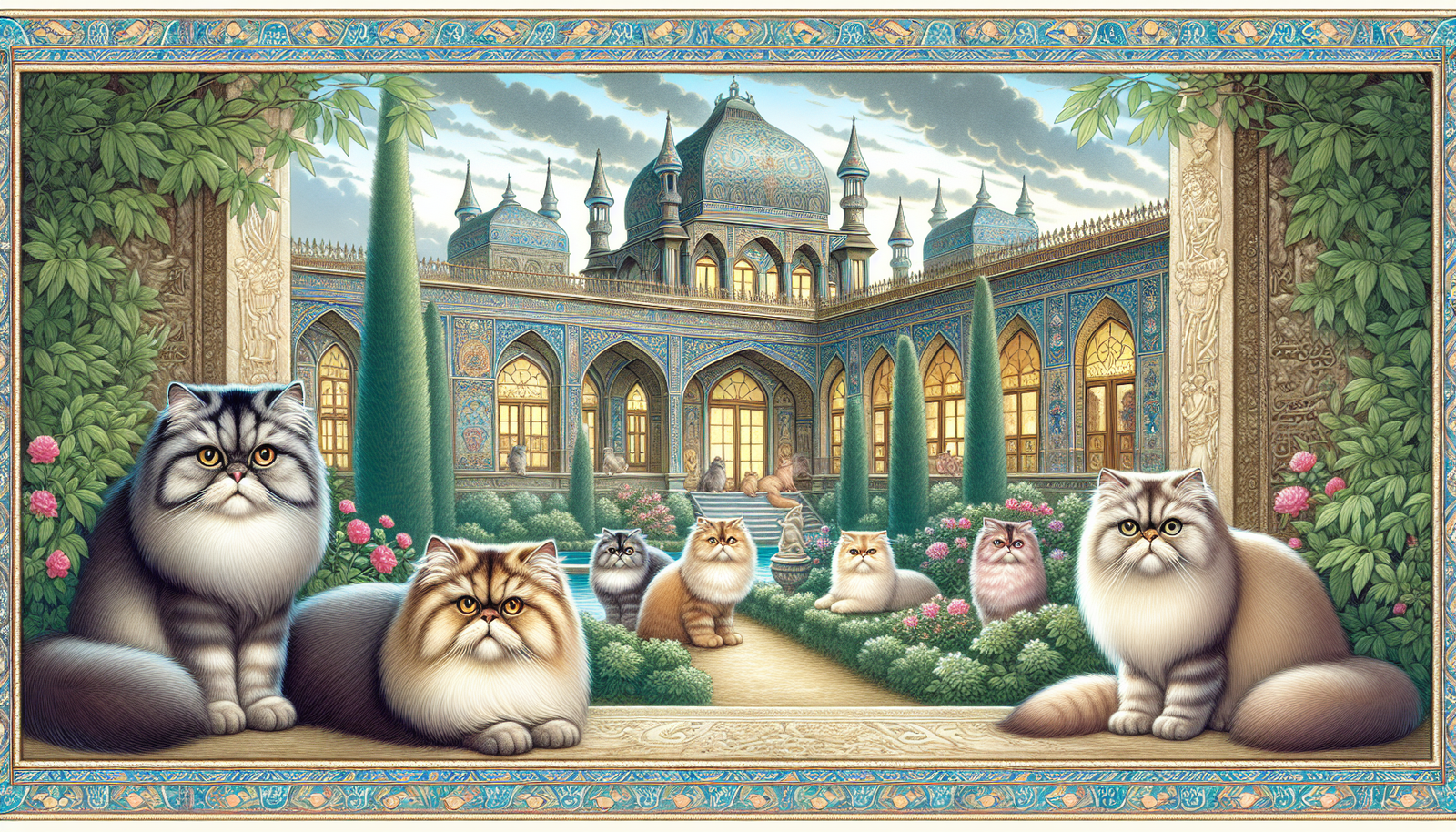Have you ever wondered about the fascinating origins of Persian cats? These elegant and luxurious felines have captivated our hearts for centuries, but do you know where they truly come from? Prepare to be intrigued as we take you on a journey through time and uncover the mysterious origins of these enchanting creatures. From ancient Persia to the present day, the history of Persian cats is filled with tales of royalty, grace, and a touch of mystery. So sit back, relax, and let us unravel the captivating story behind the origins of Persian cats.
Ancient Origins
Persian cats have a rich and fascinating history that can be traced back to ancient civilizations. The early domestication of cats played a crucial role in the development of these majestic felines. Dating back as far as 4,000 years ago, it is believed that cats were first domesticated in the region known as the Fertile Crescent, which encompasses modern-day Iraq, Iran, and Turkey. These early cats provided valuable assistance in controlling rodent populations and quickly became cherished companions.
Early Domestication of Cats
The domestication of cats in ancient Persia, now known as Iran, holds a significant place in the history of Persian cats. Cats were highly revered in Persian society, with their presence being highly valued for their hunting abilities and their perceived mystical powers. It is believed that cats held a special place within Persian households, with many households keeping them as cherished pets.

Persia: The Land of Ancient Civilizations
Persia, known today as Iran, is a land steeped in ancient civilizations and cultural heritage. It is within this rich tapestry of history that the Persian cat breed first emerged. Persia was home to various powerful empires, such as the Achaemenid Empire and the Sassanian Empire, where cats were held in high regard. The influence of these civilizations can still be seen in the Persian cat breed today.
Development of Persian Cats
Initial Appearance
The initial appearance of Persian cats can be traced back to ancient Persia. These cats were known for their distinct physical features, including a long and luxurious coat, a massive head, and round face, and big, expressive eyes. These qualities set them apart from other cat breeds and contributed to their popularity both in ancient Persia and beyond.
Selective Breeding
Selective breeding played a significant role in the development and refinement of the Persian cat breed. Over the centuries, Persian cats were selectively bred to enhance their desirable traits, such as their coat length and texture, facial structure, and eye shape. This careful breeding resulted in the distinct and elegant Persian cats we know today.
Contribution of European Breeders
While the Persian cat breed originated in ancient Persia, it was European breeders who played a crucial role in further refining and popularizing the breed. In the late 19th century, British and French breeders began importing Persian cats from Persia and breeding them with local cats. This infusion of new bloodlines from Persia helped to strengthen and improve the breed, leading to the development of distinct lines within the Persian cat family.

Distinctive Features
Distinctive Appearance
One of the most striking features of Persian cats is their distinctive appearance. With their large and round heads, short noses, and small, rounded ears set wide apart, they exude an air of elegance and beauty. Their unique physical characteristics make them instantly recognizable and lend them an aura of charm and sophistication.
Long and Luxurious Coat
Perhaps the most iconic feature of Persian cats is their long and luxurious coat. Persian cats have a thick, dense, and silky coat that comes in an array of colors and patterns, including solid, bi-color, tabby, calico, and more. This luscious coat requires regular grooming to keep it free from mats and tangles, but the effort is worth it, as it adds to their regal appearance.
Massive Head and Round Face
The massive head and round face of Persian cats contribute to their overall adorable and captivating appearance. Their round and full cheeks, along with their short noses and large, expressive eyes, create a look that is both cute and endearing. This unique facial structure has made Persian cats a favorite among cat enthusiasts and admirers worldwide.
Big and Expressive Eyes
The eyes of Persian cats are often referred to as the window to their soul. They have large and expressive eyes that are typically round or slightly oval in shape. The eye color can vary from shades of blue, green, and copper, adding to the allure of these captivating felines. Their eyes are known for their gentle and peaceful expression, reflecting their calm and affectionate nature.
Popularity and Spread
Introduction to Europe
The Persian cat’s journey from ancient Persia to the rest of the world began when European travelers and merchants encountered these exquisite felines during their visits to Persia. The allure and beauty of Persian cats captivated the Europeans, leading to their subsequent introduction to Europe. The first recorded appearance of Persian cats in Europe dates back to the 16th century, which marked the beginning of their journey to worldwide popularity.
Exhibitions and Shows
The increasing popularity of Persian cats led to their inclusion in various exhibitions and shows, where their exceptional beauty and elegance were showcased. One notable event that helped boost the breed’s popularity was the first-ever cat show held at London’s Crystal Palace in 1871, where Persian cats made a significant impact. These shows provided a platform for breeders to display the beauty and charm of Persian cats, further propelling their popularity.
Spread to the United States
The widespread popularity of Persian cats eventually reached the shores of the United States. In the late 19th century, Persian cats were imported to America, where they quickly gained a devoted following. Their graceful appearance and gentle demeanor appealed to cat lovers across the country, leading to the establishment of Persian cat breeding programs and the formation of Persian cat clubs.
Role in Persian Culture
Symbolism in Persian Art
Persian cats hold a significant place in Persian culture and have been featured prominently in Persian art throughout history. They often symbolize elegance, grace, and beauty in Persian paintings, poetry, and literature. Their inclusion in these artistic expressions reflects the deep reverence and admiration that Persian society has for these majestic creatures.
Persian Legend and Folklore
Persian legend and folklore are replete with stories and myths that feature Persian cats. These tales often portray them as mystical and wise beings, endowed with magical powers. Persian folklore depicts Persian cats as protectors against evil spirits, bringing good luck, and serving as guardians of households. These enduring legends showcase the deep-seated cultural significance of Persian cats in Persian folklore and mythology.
Royal Companionship
In ancient Persia, Persian cats were not only treasured for their physical beauty but also for their status as royal companions. They were highly valued and often found in the company of royalty and aristocracy. Persian cats were considered the epitome of luxury and sophistication, further solidifying their regal status. Their presence in royal palaces and homes reflected the elevated social status and refined taste of their owners.
Modern Persian Cats
Breeding Programs and Standards
Modern Persian cats owe their existence to the dedication and commitment of breeders worldwide. In order to preserve and enhance the breed’s desired qualities, breeding programs have been established, focusing on maintaining specific standards for Persian cats. These standards encompass various aspects, including physical appearance, temperament, and health, to ensure that the breed’s distinct characteristics are passed down through generations.
Color Varieties
Persian cats come in a wide range of colors and patterns, showcasing the breed’s versatility and beauty. From solid colors such as white, black, blue, and cream to beautifully patterned coat variations such as tabby, calico, and tortoiseshell, there is a Persian cat to suit every preference. The diversity of color options adds to the appeal and popularity of Persian cats among cat enthusiasts worldwide.
Health Issues and Care
Like any other breed, Persian cats have their own set of health concerns that need to be addressed. Due to their unique anatomy, they are prone to certain health issues, such as respiratory problems, eye infections, dental problems, and various genetic disorders. Regular vet check-ups, proper grooming, a nutritious diet, and a clean environment are essential for maintaining the overall health and well-being of Persian cats.
Celebrity Persians
Famous Persian Cat Owners
Persian cats have long captured the hearts of both ordinary people and celebrities alike. Many famous personalities have fallen under the spell of these enchanting felines. Some notable celebrity owners of Persian cats include iconic figures like Audrey Hepburn, Marilyn Monroe, and Florence Nightingale. The allure of Persian cats extends beyond their physical beauty and is recognized by people from all walks of life.
Notable Appearances in Media
Persian cats have also left their mark in the world of media and entertainment. These glamorous felines have made appearances in movies, television shows, and even music videos. One notable example is the character of Mr. Bigglesworth in the Austin Powers movies, whose distinctive appearance was inspired by the Persian cat breed. These appearances in popular media have further elevated the status of Persian cats and solidified their position in popular culture.
Competitions and Organizations
International Cat Shows
The popularity of Persian cats has spawned various international cat shows, where breeders and owners come together to showcase their prized felines. These shows provide a platform for Persian cats to be judged based on established breed standards and compete for prestigious titles. The International Cat Association (TICA) and the Cat Fanciers’ Association (CFA) are two prominent organizations that organize and oversee such competitions, contributing to the continued recognition and promotion of Persian cats.
Persian-Specific Organizations
To further support and celebrate the Persian cat breed, there are specific organizations dedicated solely to the preservation and promotion of Persians. These organizations provide resources, guidance, and a supportive community for Persian cat breeders and enthusiasts alike. They play a crucial role in ensuring the continued growth and well-being of the Persian cat breed.
Misconceptions and Controversies
Breed Stereotypes
Despite their immense popularity, Persian cats have faced their fair share of misconceptions and stereotypes. One common misconception is that all Persian cats are lazy and low-energy. While Persian cats may have a more laid-back demeanor compared to some other breeds, each cat has its own unique personality. Another misconception is that Persian cats are high-maintenance due to their grooming needs, but with regular care and attention, this can be managed effectively.
Ethical Considerations
The breeding and ownership of Persian cats have drawn scrutiny and ethical considerations in recent years. Some critics argue that the selective breeding practices used to achieve the breed’s desired features may prioritize appearance over the overall health and well-being of the cats. Responsible breeding practices, proper care, and ethical considerations are essential in ensuring the longevity, health, and happiness of Persian cats.
Modern Challenges
Modern challenges faced by Persian cats include the potential impact of genetic disorders and the need to strike a balance between preserving breed standards and promoting genetic diversity. Efforts are being made to reduce the occurrence of hereditary health issues through responsible breeding practices and genetic testing. Additionally, breeders and organizations are working towards creating awareness and understanding about the care needs and requirements of Persian cats to ensure their proper well-being.
Preservation and Future
Conservation Efforts
The preservation of the Persian cat breed requires continuous efforts and commitment from breeders, organizations, and cat enthusiasts. Conservation efforts aim to maintain and protect the breed’s distinct characteristics while also addressing health concerns and improving overall well-being. These efforts encompass responsible breeding practices, genetic testing, and promoting sustainable practices to ensure the continued existence and vitality of Persian cats.
Breeding Programs
Breeding programs play a vital role in preserving the future of the Persian cat breed. These programs focus on maintaining the breed’s desired traits while ensuring the overall health and genetic diversity of Persian cats. Responsible breeders dedicate themselves to producing healthy and well-socialized Persian kittens, ensuring that the breed will thrive for generations to come.
Prospects and Challenges
The future of Persian cats looks promising, but it also comes with its own set of challenges. Maintaining genetic diversity while preserving the breed’s distinct traits remains a delicate balance. Ongoing efforts to address health concerns and promote responsible breeding practices will be crucial in shaping the future of Persian cats. Continued support from breeders, organizations, and cat enthusiasts will ensure that the beauty and charm of Persian cats continue to enchant generations to come.
In conclusion, the ancient origins, development, and cultural significance of Persian cats make them a breed that is deeply cherished and adored. From their distinctive appearance to their roles in art, folklore, and society, Persian cats have left an indelible mark on human history. With ongoing preservation efforts and responsible breeding practices, the future of Persian cats looks bright, ensuring that these regal felines will continue to captivate hearts for years to come. The story of Persian cats is one of elegance, beauty, and companionship, and their enduring allure serves as a testament to their status as one of the most beloved cat breeds in the world.

